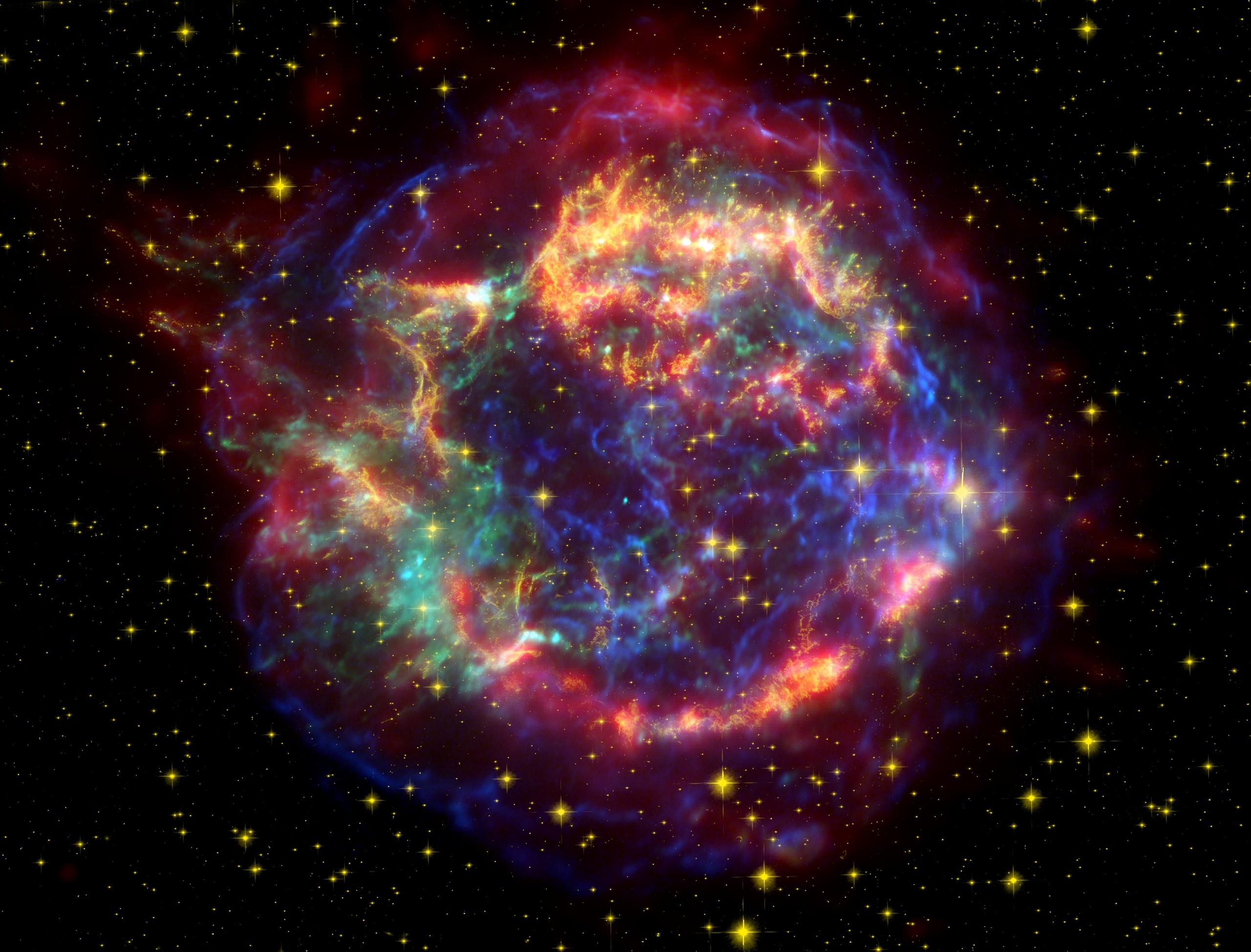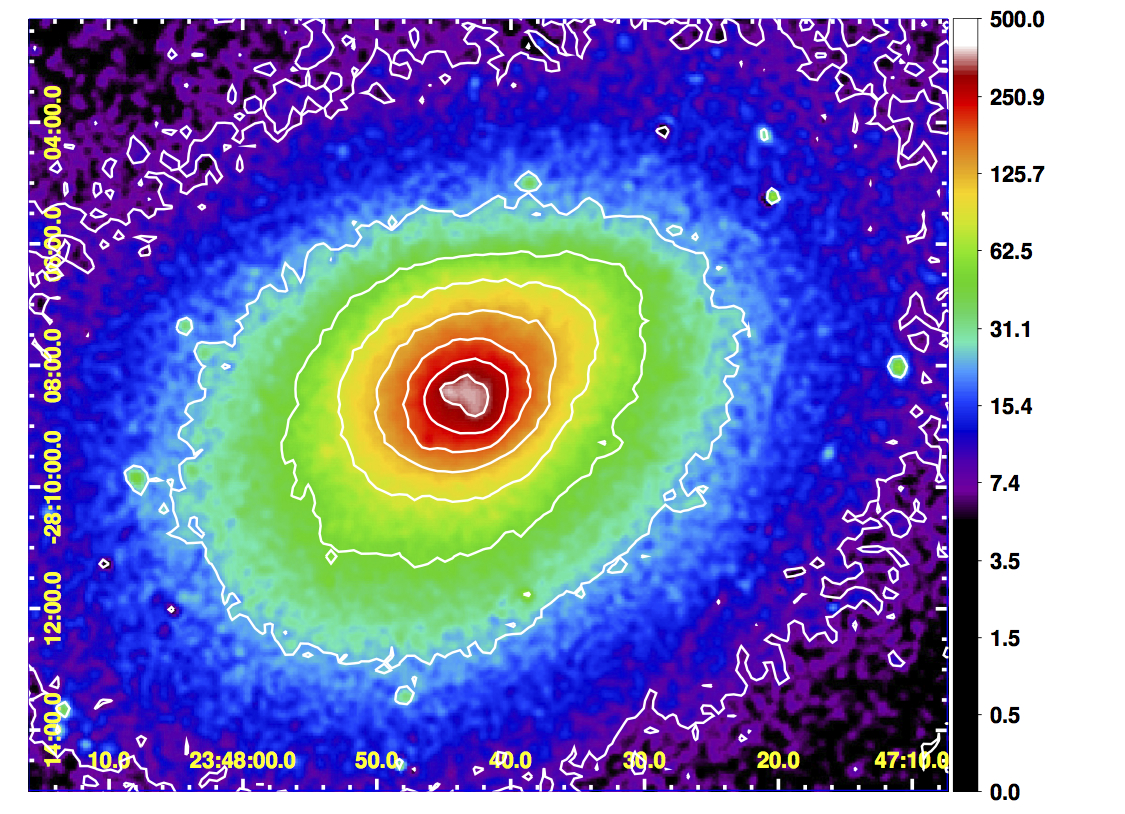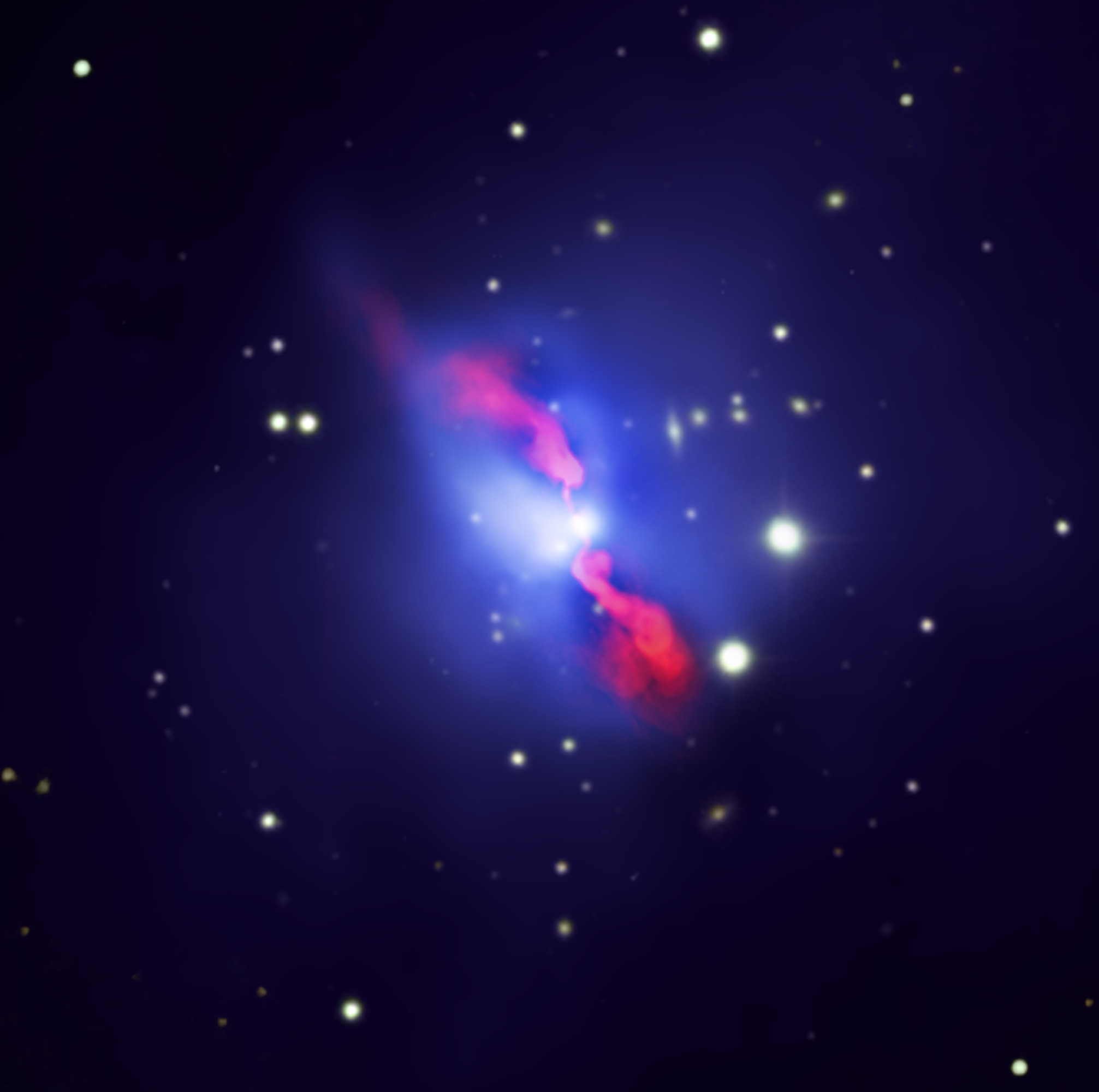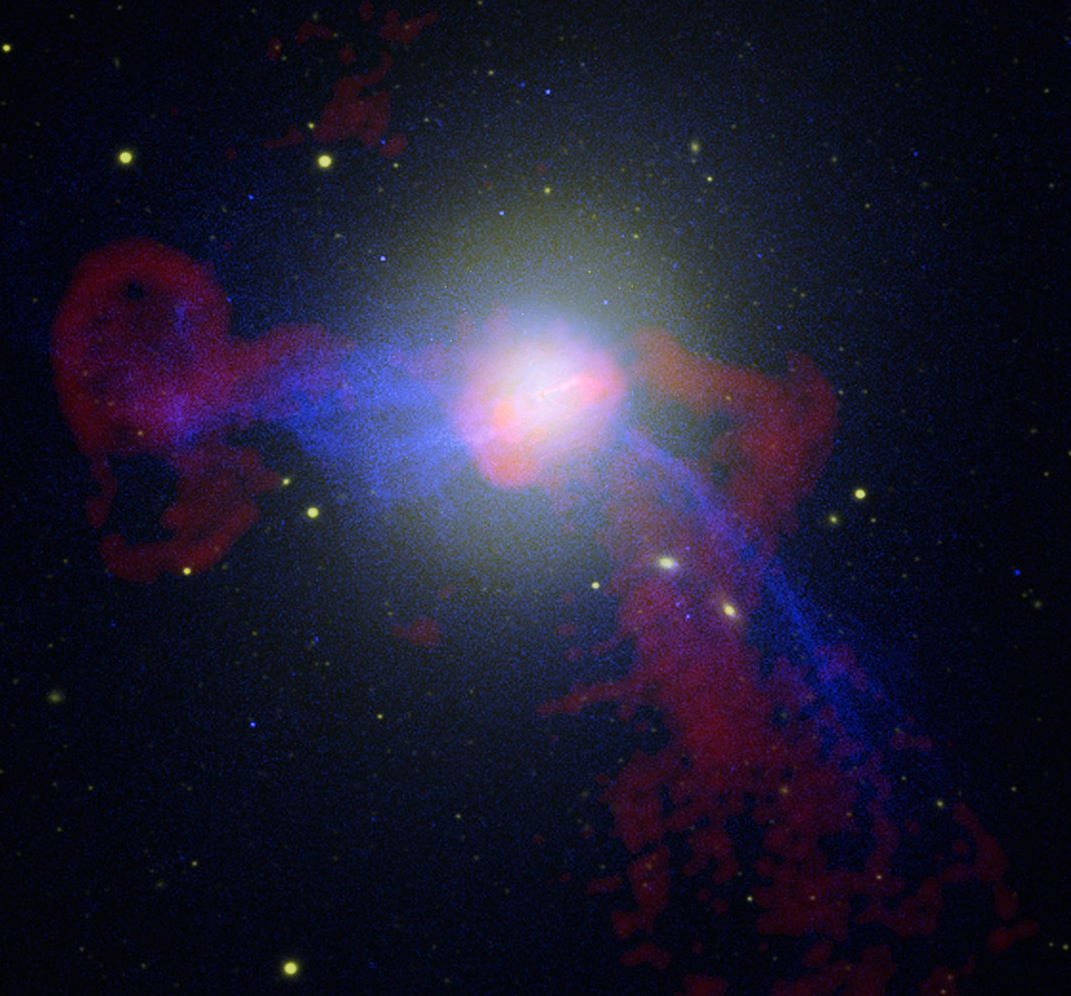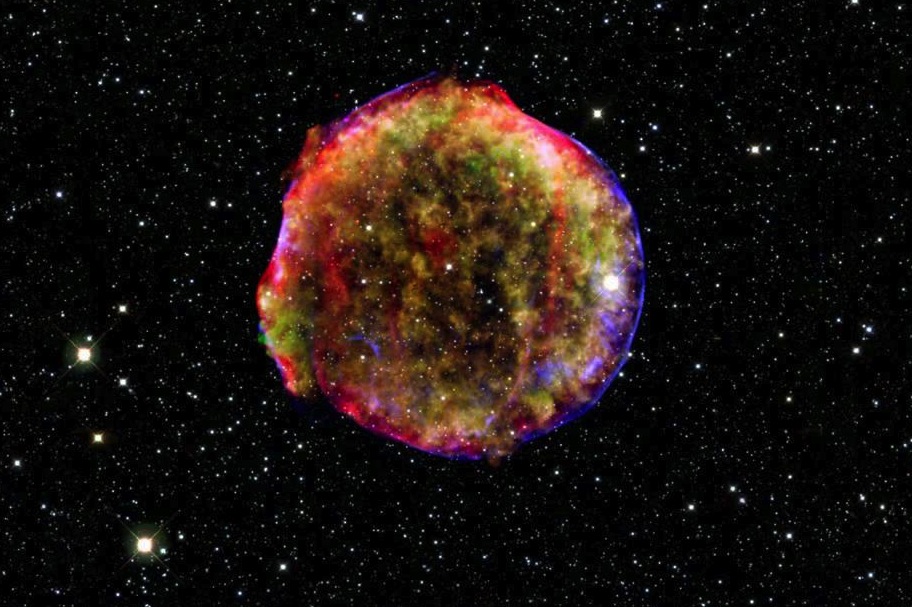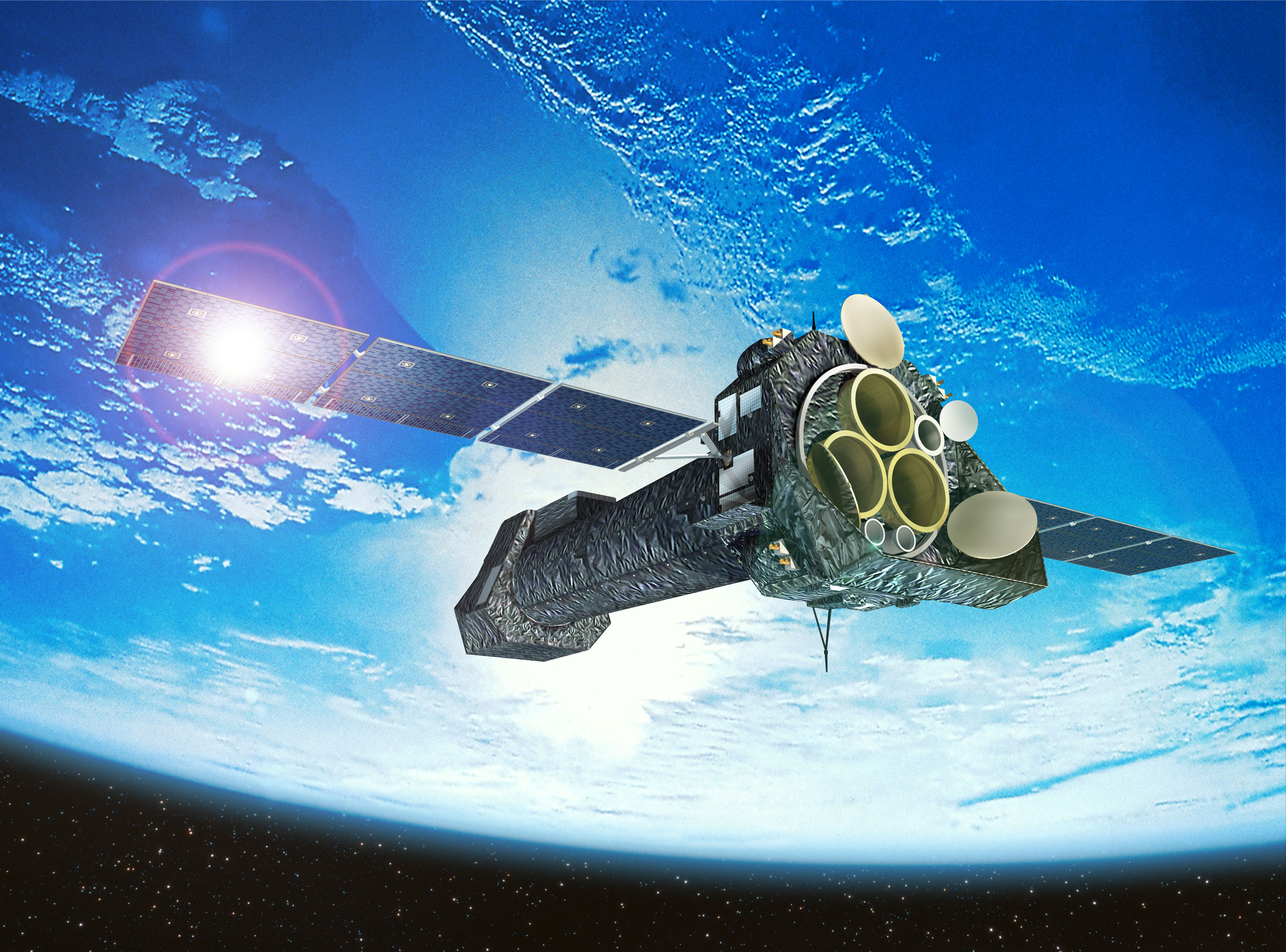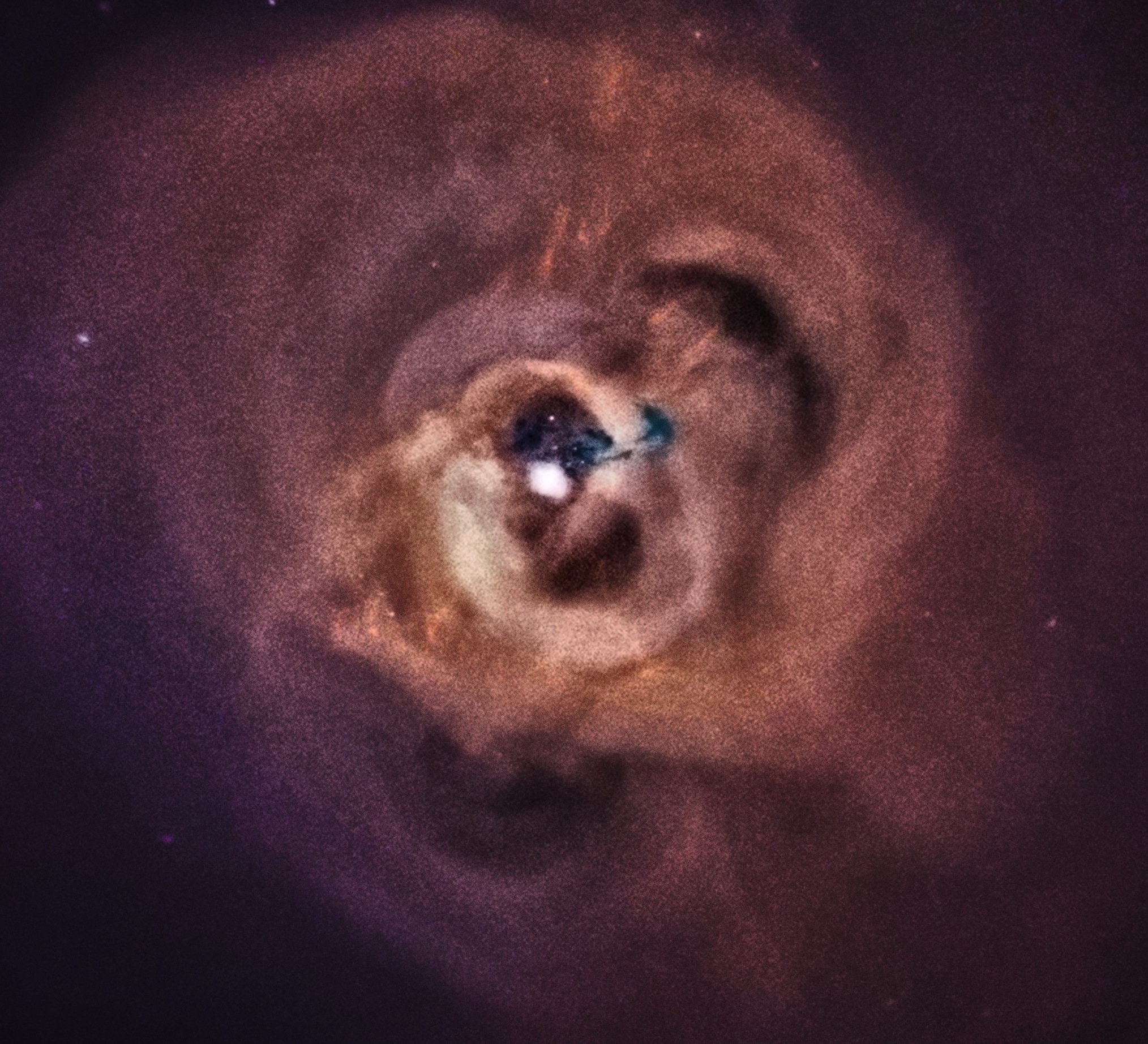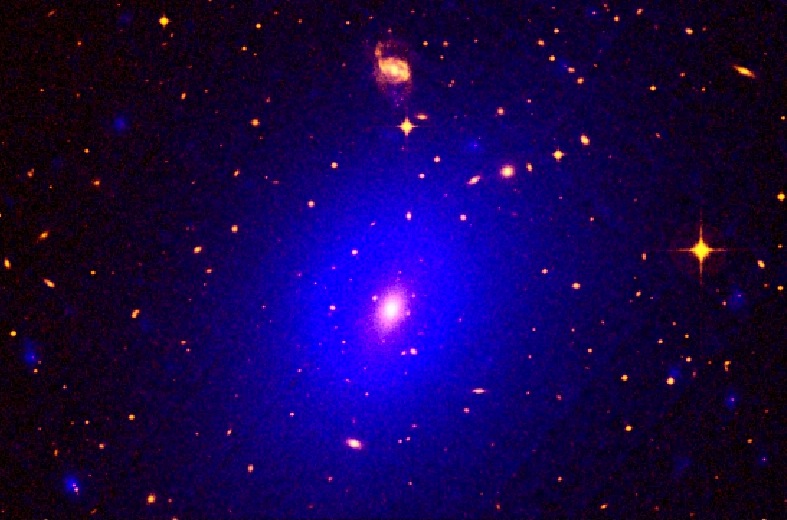
Welcome to my webpage!
I'm an Assistant Astronomer ("Astronome Adjoint") CNAP at the Institut de Recherche en Astrophysique et Planétologie (IRAP – Toulouse, France).
On these pages you will find more about my activities, research interests, as well as a CV, a list of publications, and other (useful and less useful) things...
XRISM

X-Ray Imaging and Spectroscopy Mission (XRISM) is an ambitious JAXA/NASA collaborative space mission (with participation from ESA), designed to explore the X-ray emission of our Universe like never before. On one hand, its spectrometer Resolve will "see" X-ray sources in the sky (massive stars, stellar and supermassive black holes, hot gas in clusters and group of galaxies, etc.) with an unprecedented spectral resolution of ~5 eV, which will revolutionize our understanding of astrophysics (at high energies but not only). On the other hand, its imager Xtend will allow impressive mapping over a very large field-of-view spreading over 38 arcmin. Launched on September 7 this year, the mission flies in low-Earth orbit, ensuring low and stable background to maximize its scientific performances.
Research interests
About 80% of the total baryonic matter of the Universe is in the form of a very hot gas, glowing in X-ray wavelengths, and filling the very large gravitational well of clusters of galaxies. This so-called intra-cluster medium (ICM) contains not only primordial hydrogen and helium, but is rich in heavy elements (O, Mg, Si, S, Ca, Fe, Ni,...). These metals have been created by billions of supernovae within cluster galaxies since the major epoch of star formation (about 10-12 billion years ago), then spread out and accumulated over cosmic time into the ICM. When, where, and how did this chemical enrichment occur? And which types of supernovae are responsible for creating the metals we see today? Using X-ray observatories (e.g. XMM-Newton, Chandra, XRISM), I measure the abundance of these elements in galaxy clusters in order to answer these open questions.
Résumé
Born in Brussels (Belgium), 27 June 1989
Languages: French (native), English (fluent), Dutch (intermediate)
Academic positions
-
2022-now - XRISM support scientist - NASA/GSFC, University of Maryland (USA)
-
2019-2022 - Research Fellow - ESA/ESTEC (The Netherlands)
-
2017-2019 - Postdoc - MTA/Eötvos University (Hungary)
-
2017-2017 - Postdoc - Leiden University (The Netherlands)
Education
-
2013-2017 - PhD - High-energy Astrophysics, Leiden University/SRON (The Netherlands)
-
2010-2012 - MSc - Space Sciences, University of Liège (Belgium)
-
2007-2010 - BSc - Physics, Université Libre de Bruxelles (Belgium)
-
2001-2007 - High school - Latin-Mathematics, Lycée Émile Jacqmain, Brussels (Belgium)
Publications
First author:
-
- Mernier, F., Su, Y., Markevitch, M., Zhang, C., Simionescu, A., Rasia, E., Lin, S.-C., Zhuravleva, I., Sarkar, A., Kraft, R., Ogorzalek, A., Ayromlou, M., Forman, W. R., Jones, C., Bregman, J. N., Ettori, S., Dolag, K., Biffi, V., Churazov, E., Sun, M., ZuHone, J., Bogdán, Á., Khabibullin, I. I., Werner, N., Truong, N., Chakraborty, P., Walker, S. A., Vogelsberger, M., Pillepich, A., Mirakhor, Mohammad S.
Exploring chemical enrichment of the intracluster medium with the Line Emission Mapper (White Paper)
2023, arXiv:2310.04499 -
- Mernier, F., Werner, N., Bagchi, J., Gendron-Marsolais, M.-L., Gopal-Krishna, Guainazzi, M., Richard-Laferrière, A., Shimwell, T. W., Simionescu, A.
Discovery of inverse-Compton X-ray emission and estimate of the volume-averaged magnetic field in a galaxy group
2023, MNRAS, 524, 4939 -
- Mernier, F., Werner, N., Su, Y., Pinto, C., Grossová, R., Simionescu, A., Iodice, E., Sarzi, M., Görgei, A.
The cycle of metals in the infalling elliptical galaxy NGC 1404
2022, MNRAS, 511, 3159 -
- Mernier, F., Cucchetti, E., Tornatore, L., Biffi, V., Pointecouteau, E., Clerc, N., Peille, P., Rasia, E., Barret, D., Borgani, S., Bulbul, E., Dauser, T., Dolag, K., Ettori, S., Gaspari, M., Pajot, F., Roncarelli, M., Wilms, J., Noûs, C.
Constraining the origin and models of chemical enrichment in galaxy clusters using the Athena X-IFU
2020, A&A, 642, A90 -
- Mernier, F., Werner, N., Lakhchaura, K., de Plaa, J., Gu. L, Kaastra, J. S., Mao, J., Simionescu, A., Urdampilleta, I.
How do atomic code uncertainties affect abundance measurements in the intracluster medium?
2020, Astron. Nachr., 341, 203 -
- Mernier, F., Werner, N., Bagchi, J., Simionescu, A., Böhringer, H., Allen, S. W., Jacob, J.
Magnetic fields and extraordinarily bright radio emission in the X-ray faint galaxy group MRC 0116+111
2019, MNRAS, 486, 5430 -
- Mernier, F., Biffi, V., Medvedev, P., Simionescu, A., Ettori, S., Werner, N., Kaastra, J. S., de Plaa, J., Gu, L.
Enrichment of the Hot Intracluster Medium: Observations
2018, Space Sci Rev, 214, 129 -
- Mernier, F., Werner, N., de Plaa, J., Kaastra, J. S., Raassen, A. J. J., Gu, L., Mao, J., Urdampilleta, I., Simionescu, A.
Solar chemical composition in the hot gas of cool-core ellipticals, groups, and clusters of galaxies
2018, MNRAS: Letters, 480, L95 -
- Mernier, F., de Plaa, J., Werner, N., Kaastra, J. S., Raassen, A. J. J., Gu, L., Mao, J., Urdampilleta, I., Truong, N., Simionescu, A.
Mass-invariance of the iron enrichment in the hot haloes of massive ellipticals, groups, and clusters of galaxies
2018, MNRAS: Letters, 478, L116 -
- Mernier, F., de Plaa, J., Kaastra, J. S., Zhang, Y.-Y., Akamatsu, H., Gu, L., Kosec, P., Mao, J., Pinto, C., Reiprich, T. H., Sanders, J. S., Simionescu, A., Werner, N.
Radial metal abundance profiles in the intra-cluster medium of cool-core galaxy clusters, groups, and ellipticals
2017, A&A, 603, A80 -
- Mernier, F., de Plaa, J., Pinto, C., Kaastra, J. S., Kosec, P., Zhang, Y.-Y., Mao, J., Werner, N., Pols, O. R., Vink, J.
Origin of central abundances in the hot intra-cluster medium. II. Chemical enrichment and supernova yield models
2016, A&A, 595, A126 -
- Mernier, F., de Plaa, J., Pinto, C., Kaastra, J. S., Kosec, P., Zhang, Y.-Y., Mao, J., Werner, N.
Origin of central abundances in the hot intra-cluster medium. I. Individual and average abundance ratios from XMM-Newton EPIC
2016, A&A, 592, A157 -
- Mernier, F., de Plaa, J., Lovisari, L., Pinto, C., Zhang, Y.-Y., Kaastra, J. S., Werner, N., Simionescu, A.
Abundance and temperature distributions in the hot intra-cluster gas of Abell 4059
2015, A&A, 575, A37 -
- Mernier, F., and Rauw, G.
An XMM-Newton view of the M 17 nebula
2013, NewA, 20, 42
Co-author:
-
- Tümer, A., Wik, D. R., Zhang, X., Hoang, D. N., Gaspari, M., van Weeren, R. J., Rudnick, L., Stuardi, C., Mernier, F., Simionescu, A., Rojas Bolivar, R. A., Kraft, R., Akamatsu, H., de Plaa, J.
The NuSTAR and Chandra View of CL 0217+70 and Its Tell-tale Radio Halo
2023, ApJ, 942, 79 -
- Kraft, R., Markevitch, M., Kilbourne, C., Adams, J. S., Akamatsu, H., Ayromlou, M., Bandler, S. R., Barbera, M., Bennett, D. A., Bhardwaj, A., Biffi, V., Bodewits, D., Bogdan, A., Bonamente, M., Borgani, S., Branduardi-Raymont, G., Bregman, J. N., Burchett, J. N., Cann, J., Carter, J., Chakraborty, P., Churazov, E., Crain, R. A., Cumbee, R., Dave, R., DiPirro, M., Dolag, K., Bertrand Doriese, W., Drake, J., Dunn, W., Eckart, M.n, Eckert, D., Ettori, S., Forman, W. R., Galeazzi, M., Gall, A., Gatuzz, E., Hell, N., Hodges-Kluck, E., Jackman, C., Jahromi, A., Jennings, F., Jones, C., Kaaret, P., Kavanagh, P. J., Kelley, R. L., Khabibullin, I., Kim, C.-G., Koutroumpa, D., Kovacs, O., Kuntz, K. D., Lau, E., Lee, S.-H., Leutenegger, M., Lin, S.-C., Lisse, C., Lo Cicero, U., Lovisari, L., McCammon, D., McEntee, S., Mernier, F., Miller, E. D., Nagai, D., Negro, M., Nelson, D., Ness, J.-U., Nulsen, P., Ogorzalek, A., Oppenheimer, B. D., Oskinova, L., Patnaude, D., Pfeifle, R. W., Pillepich, A., Plucinsky, P., Pooley, D., Porter, F. S., Randall, S., Rasia, E., Raymond, J., Ruszkowski, M., Sakai, K., Sarkar, A., Sasaki, M., Sato, K., Schellenberger, G., Schaye, J., Simionescu, A., Smith, S. J., Steiner, J. F., Stern, J., Su, Y., Sun, M., Tremblay, G., Truong, N., Tutt, J., Ursino, E., Veilleux, S., Vikhlinin, A., Vladutescu-Zopp, S., Vogelsberger, M., Walker, S. A., Weaver, K., Weigt, D. M., Werk, J., Werner, N., Wolk, S. J., Zhang, C., Zhang, W. W., Zhuravleva, I., ZuHone, J.
Line Emission Mapper (LEM): Probing the physics of cosmic ecosystems (White Paper)
2022, arXiv:2211.09827 -
- Chatzigiannakis, D. Simionescu, A., Mernier, F.
The chemical and thermal structure of the hot atmosphere of the elliptical galaxy NGC 5813
2022, MNRAS, 516, 6194 -
- Sarkar, A. ; Su, Y. ; Truong, N. ; Randall, S. ; Mernier, F. ; Gastaldello, F. ; Biffi, V. ; Kraft, R.
Chemical abundances in the outskirts of nearby galaxy groups measured with joint Suzaku and Chandra observations
2022, MNRAS, 516, 3068 -
- Gu, L., Shah, C., Mao, J., Raassen, A. J. J., de Plaa, J., Pinto, C., Akamatsu, H., Werner, N., Simionescu, A., Mernier, F., Sawada, M., Mohanty, P., Amaro, P., Gu, M. F., Porter, F. S., L\'{o}pez-Urrutia, J. R. C., Kaastra, J. S.
X-ray spectra of the Fe-L complex. III. Systematic uncertainties in atomic data
2022, A&A, 664, A62 -
- Mao, J., Zhou, P., Simionescu, A., Su, Y., Fukazawa, Y., Gu, L., Akamatsu, H., Zhu, Z., de Plaa, J., Mernier, F., Kaastra, J. S.
Elemental Abundances of the Hot Atmosphere of Luminous Infrared Galaxy Arp 299
2021, ApJL, 918, L17 -
- Gastaldello, F., Simionescu, A., Mernier, F., Biffi, V. Gaspari, M., Sato, K., Matsushita, K.
The Metal Content of the Hot Atmospheres of Galaxy Groups
2021, Universe, 7, 208 -
- Urdampilleta, I., Simionescu, A., Kaastra, J. S., Zhang, X., Di Gennaro, G., Mernier, F., de Plaa, J., Brunetti, G.
X-ray study of Abell 3365 with XMM-Newton
2021, A&A, 646, A95 -
- Gu, L., Shah, C., Mao, J., Raassen, A. J. J., de Plaa, J., Pinto, C., Akamatsu, H., Werner, N., Simionescu, A., Mernier, F., Sawada, M., Mohanty, P., Amaro, P., Gu, M. F., Porter, F. S., Crespo López-Urrutia, J. R., Kaastra, J. S.
X-ray spectra of the Fe-L complex. II. Atomic data constraints from the EBIT experiment and X-ray grating observations of Capella
2020, A&A, 641, A93 -
- Werner, N., and Mernier, F.
Hot Atmospheres of Galaxies, Groups, and Clusters of Galaxies
2020, Reviews in Frontiers of Modern Astrophysics - From Space Debris to Cosmology (ed. P. Kabáth, D. Jones, M. Skarka), Springer, pp. 279-310 -
- Breuer, J.-P., Werner, N., Mernier, F., Mroczkowski, T., Simionescu, A., Clarke, T. E., ZuHone, J. A., Di Mascolo, L.
The mergers in Abell 2256: displaced gas and its connection to the radio-emitting plasma
2020, MNRAS, 495, 5014 -
- Grossová, R., Werner, N., Rajpurohit, K., Mernier, F., Lakhchaura, K., Gabányi, K., Canning, R. E. A., Nulsen, P., Massaro, F., Sun, M., Connor, T., King, A., Allen, S. W., Frisbie, R. L. S., Donahue, M., Fabian, A. C.
Powerful AGN jets and unbalanced cooling in the hot atmosphere of IC 4296
2019, MNRAS, 488, 1917 -
- Urdampilleta, I., Mernier, F., Kaastra, J. S., Simionescu, A., de Plaa, J., Kara, S., and Ercan, E. N.
Iron abundance distribution in the hot gas of merging galaxy clusters
2019, A&A, 629, A31 -
- Mao, J., Mernier, F., Kaastra, J. S., Gu, L., Mehdipour, M., de Plaa, J.
The impact of improved plasma diagnostics on modeling the X-ray Universe
2019, JINST, 14, C07012 -
- Su, Y., Kraft, R. P., Nulsen, P. E. J., Jones, C., Maccarone, T. J., Mernier, F., Lovisari, L., Sheardown, A., Randall, S. W., Roediger, E., Fish, T. M., Forman, W. R., Churazov, E.
Extended X-Ray Study of M49: The Frontier of the Virgo Cluster
2019, AJ, 158, 6 -
- Gu, L., Raassen, A. J. J., Mao, J., de Plaa, J., Shah, C., Pinto, C., Werner, N., Simionescu, A., Mernier, F., Kaastra, J. S.
X-ray spectra of the Fe-L complex
2019, A&A, 627, A51 -
- Gu, L., Akamatsu, H., Shimwell, T. W., Intema, H. T., van Weeren, R. J., de Gasperin, F., Mernier, F., Mao, J., Urdampilleta, I., de Plaa, J., Parekh, V., Röttgering, H. J. A., Kaastra, J. S.
Observations of a pre-merger shock in colliding clusters of galaxies
2019, Nature Astronomy, 3, 838 -
- Truong, N., Rasia, E., Biffi, V., Mernier, F., Werner, N., Gaspari, M., Borgani, S., Planelles, S., Fabjan, D., Murante, G.
Mass-Metallicity Relation from Cosmological Hydrodynamical Simulations and X-ray Observations of Galaxy Groups and Clusters
2019, MNRAS, 484, 2896 -
- Lakhchaura, K., Mernier, F., Werner, N.
Possible depletion of metals into dust grains in the core of the Centaurus cluster of galaxies
2019, A&A, 623, A17 -
- Simionescu, A., Nakashima, S., Yamaguchi, H., Matsushita, K., Mernier, F., Werner, N., Tamura, T., Nomoto, K., de Plaa, J., Leung, S.-C., Bamba, A., Bulbul, E., Eckart, M. E., Ezoe, Y., Fabian, A. C., Fukazawa, Y., Gu, L., Ichinohe, Y., Ishigaki, M. N., Kaastra, J. S., Kilbourne, C., Kitayama, T., Leutenegger, M., Loewenstein, M., Maeda, Y., Miller, E. D., Mushotzky, R. F., Noda, H., Pinto, C., Porter, F. S., Safi-Harb, S., Sato, K., Takahashi, T., Ueda, S., Zha, S.
Constraints on the chemical enrichment history of the Perseus Cluster of galaxies from high-resolution X-ray spectroscopy
2019, MNRAS, 483, 1701 -
- Mao, J., de Plaa, J., Kaastra, J. S., Pinto, C., Gu, L., Mernier, F., Yan, H.-L., Zhang, Y.-Y., Akamatsu, H.
Nitrogen abundance in the X-ray halos of clusters and groups of galaxies
2019, A&A, 621, A9 -
- Biffi, V., Mernier, F., Medvedev, P.
Enrichment of the Hot Intracluster Medium: Numerical Simulations
2018, Space Sci Rev, 214, 123 -
- Urdampilleta, I., Akamatsu, H., Mernier, F., Kaastra, J. S., de Plaa, J., Ohashi, T., Ishisaki, Y., Kawahara, H.
X-ray study of the double radio relic Abell 3376 with Suzaku
2018, A&A, 618, A74 -
- de Plaa, J., Kaastra, J. S., Werner, N., Pinto, C., Kosec, P., Zhang, Y.-Y., Mernier, F., Lovisari, L., Akamatsu, H., Schellenberger, G., Hofmann, F., Reiprich, T. H., Finoguenov, A., Ahoranta, J., Sanders, J. S., Fabian, A. C., Pols, O., Simionescu, A., Vink, J., Boehringer, H.
CHEERS: The chemical evolution RGS sample
2017, A&A, 607, A98 -
- Albert, J. G., Sifón, C., Stroe, A., Mernier, F., Intema, H. T., Röttgering, H. J. A., Brunetti, G.
Complex diffuse emission in the z = 0.52 cluster PLCK G004.5-19.5
2017, A&A, 607, A4 -
- Akamatsu, H., Fujita, Y., Akahori, T., Ishisaki, Y., Hayashida, K., Hoshino, A., Mernier, F., Yoshikawa, K., Sato, K., Kaastra, J. S.
Properties of the cosmological filament between two clusters: A possible detection of a large-scale accretion shock by Suzaku
2017, A&A, 606, A1 -
- Kaastra, J. S., Gu, L., Mao, J., Mehdipour, M., Mernier, F., de Plaa, J., Raassen, A. J. J., Urdampilleta, I.
Science with hot astrophysical plasmas
2017, JINST 12, pp. C08008 -
- de Plaa, J., and Mernier, F.
Future perspectives for abundance measurements in clusters of galaxies with XMM-Newton
2017, Astron. Nachr., 338, 299 -
- Akamatsu, H. Gu, L., Shimwell, T., Mernier, F., Mao, J., Urdampilleta, I., de Plaa, J. Röttgering, H. J. A., Kaastra, J. S.
Suzaku and XMM-Newton observations of the newly discovered early-stage cluster merger of 1E2216.0-0401 and 1E2215.7-0404
2016, A&A, 593, L7 -
- Ichinohe, Y., Werner, N., Simionescu, A., Allen, S. W., Canning, R. E. A., Mernier, F., Takahashi, T.
The growth of the galaxy cluster Abell 85: mergers, shocks, stripping and seeding of clumping
2015, MNRAS, 448, 2971
Scripts (etc.)
Here are some of my scripts, routines and tables you may find useful...
-
Fits a set of intra-cluster abundances with a combination of supernova yield models. Several models (either SNcc or SNIa) are available and can be updated or created.
-
These tables show the relative deviations of a given best-fit parameter (kT, Fe, O/Fe, Mg/Fe, Si/Fe, S/Fe) between the X-ray spectral models "cie" v3.0.5 (in the fitting package SPEX) and "(v)apec" v3.0.9 (in the fitting package XSPEC) expected for a collisionally ionized plasma at various assumed temperatures and metallicities. When you get a best-fit temperature or metal abundance value for your favourite galaxy cluster/group using your favourite spectral code, you can refer to these tables. They will give you an estimate of the current atomic/code-related uncertainties of your best-fit parameter.
- abunfit
/!\ If you use abunfit.py for a publication, please cite:
Mernier, F., de Plaa, J., Pinto, C., et al. 2016b, A&A, 595, A126
/!\ If you use the abundance measurements reported in abunfit/cluster/
for a publication, please cite:
Mernier, F., de Plaa, J., Pinto, C., et al. 2016a, A&A, 592, A157
/!\ If you use the supernova yields reported in abunfit/ for a publication,
please cite the original papers accordingly.
- SPEX (cie) vs. XSPEC (apec) comparison
/!\ If you use or refer to these numbers in a publication, please cite:
Mernier, F., Werner, N., Lakhchaura, K., et al. 2019, Astron. Nachr., 341, 203
PhD thesis
Outreach
Science is for everyone, and thus should be accessible to everyone. We, astronomers, are in general supported by public fundings; therefore it is also our responsibility to “close the loop” by revealing citizens the beauty of the Universe, keeping young (and less young) minds curious, and show the necessity of science in everyday’s life.
Below you will find some slides I presented during outreach events; in particular for the astronomy youth camps "Jeunesse et Science" (Modave, Belgium), for Astronomy on Tap - Budapest, and for Astronomy on Tap - Leiden.
About me (outside astronomy)
Astronomy is great, so are many other activities.
I'm also into music (rock, pop, and/or jazz), and one of my favourite Sunday-afternoon activities is to play piano/keyboards (see my YouTube channel). I'm also into sports: (indoor) football, fencing, sometimes also swimming, biking, or simply running. And of course, always in for deep discussions about politics, society, and philosophy while enjoying a good (preferably Trappist!) beer.
Contact
Institut de Recherche en Astrophysique et Planétologie (IRAP),
9 av. du colonel Roche,
31400 Toulouse (France),
Email: [firstname].[surname]@irap.omp.eu
...where [firstname] is francois
...and [surname] is mernier
